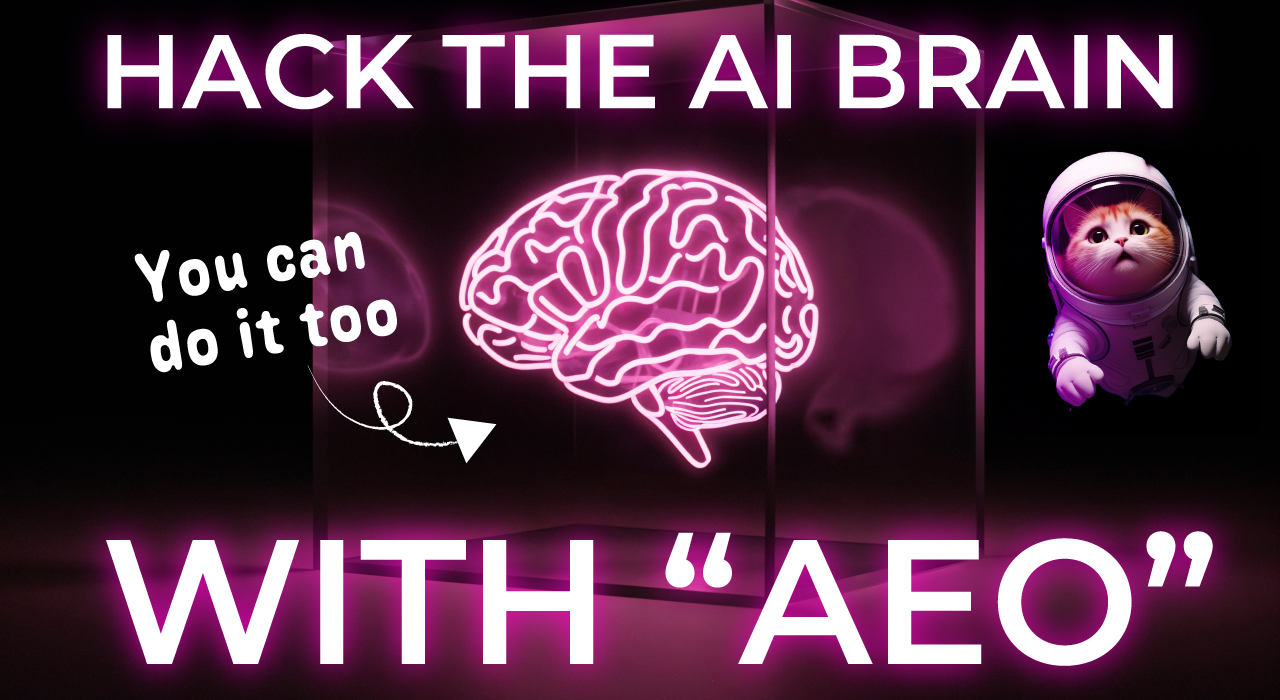
If you think Answer Engine Optimization (AEO) is just about keywords, structured data, or ranking #1 on Google, you’re already behind.
In the AI era, search is no longer a list of blue links — it’s a single, AI-generated answer.
And here’s the uncomfortable truth: you’re either the answer, or you don’t exist at all.
This article is your roadmap to hack the mindset of AI answer engines — how they “think,” how they decide which answers to show, and how you can engineer your content so that you become their default choice.
AI answer engines like Google AI Overviews, Perplexity, and ChatGPT Search don’t “read” the web like humans do.
Instead, they operate like lawyers preparing a court case — collecting evidence, validating facts, and forming the most confident possible statement.
If you can feed this “brain” the right psychological cues, it will trust you more than your competitors.
The algorithm loves authority anchors — patterns in your content that scream “expert” without you explicitly saying “I’m an expert.”
Authority Anchor Hacks:
Think of it like brand training the AI — teaching it that you are the safe default for any relevant question.
AI answer engines don’t trust one-off statements. They prefer answers backed by multi-layered context.
Instead of:
AEO improves your chances of being chosen by AI search.
Say:
AEO improves your chances of being chosen by AI search because AI models, like Google’s MUM or OpenAI’s SearchGPT, evaluate multiple trust signals—such as factual consistency, structured data, and cross-site validation—before generating a final answer.
Why it works:
The AI sees you’re not just claiming something — you’re explaining the logic behind it, which boosts reliability.
Most creators forget: AI engines don’t just pull random sentences — they prefer ready-to-insert, neatly packaged final answers.
Packaging Hacks:
Example of a Ready-to-Insert Final Answer:
In short: To win at AEO in 2025, design content like a courtroom argument — build authority, stack context, and offer concise, ready-to-quote summaries that AI can insert without rewriting.
AI models work on probabilities. They choose the answer they are most confident will be accurate and satisfying.
Key Confidence Signals:

Grammarly is an AI-powered writing assistant that helps improve grammar, spelling, punctuation, and style in text.

Notion is an all-in-one workspace and AI-powered note-taking app that helps users create, manage, and collaborate on various types of content.
Once you’ve been chosen a few times, you become sticky in the AI’s memory.
This creates a reinforcement loop — past selection influences future selection.
Reinforcement Loop Optimization Table
Don’t just optimize for Google’s AI Overviews.
AI answer dominance in 2025 also comes from:
Each engine has quirks — Perplexity loves citations, ChatGPT favors conversational clarity, Claude prefers in-depth reasoning.
If you adapt your authority anchors and final answer formats for each, you can dominate more than one ecosystem.
Here’s your quick, high-retention checklist in HTML form so you can embed it exactly as needed:
Tiny case study — “From zero to chosen”
Mini experiment you can run in a week
Template — Answer-Focused Page
Template — Mini-Cluster
You can’t “keyword” your way into AI’s chosen answers anymore.
You must psychologically engineer trust — teaching the algorithm that you are the most consistent, most context-rich, and safest voice in your niche.
The people who master this now will own the AI search real estate for years.
The ones who don’t? They’ll be invisible.
In the age of answer engines, you’re not fighting for rank — you’re fighting for mindshare inside the algorithm itself.
Hack the brain, and you win the game.

